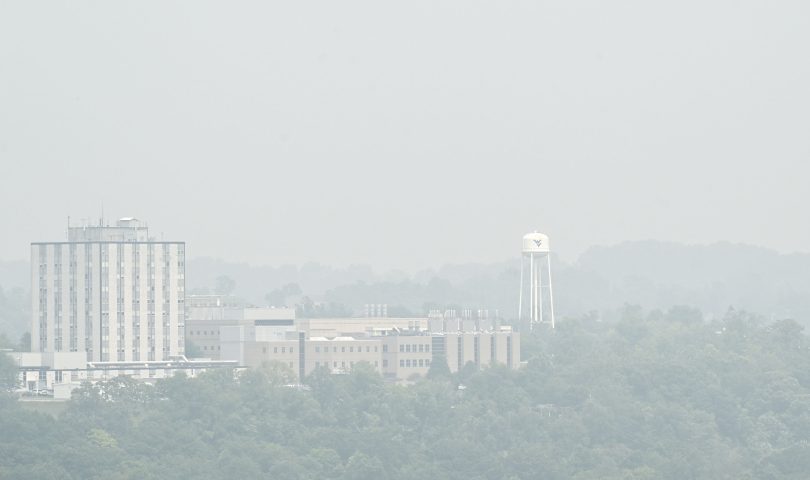CHARLESTON — If you’ve gone outside in the past day or two, you’ve noticed the haze.
But that smokiness in the air doesn’t just make it harder to see the sunshine. It can also make it more difficult — and dangerous — to breathe.
The West Virginia Department of Environmental Protection’s (WVDEP) Division of Air Quality and the state Department of Health and Human Resources’ (DHHR) Bureau for Public Health (BPH) issued a statewide Air Quality Advisory on Wednesday, for fine particulate matter as smoke from Canadian wildfires continues to impact air quality in the eastern United States.
According to AirNow.gov, unofficial air monitors indicate counties in West Virginia’s northern panhandle (Air Quality Index score of 201-300), the Morgantown-Clarksburg-Fairmont area (151-200), and the Charleston area (101-150) are currently the most impacted in the state.
The small particles in wildfire smoke can irritate the eyes, nose and throat, and can affect the heart and lungs, making it harder to breathe. Health officials say it’s important to limit outdoor activities as much as possible to avoid breathing in the particles.
Everyone is encouraged to check the AirNow website to see real time air quality data in their area and surrounding states.
According to the U.S. Environmental Protection Agency (EPA), AQI scores in the 201-300 range (purple) indicate an increased risk of health effects for everyone. Scores in the 151-200 range (red) indicate that some members of the general public may experience health effects and members of sensitive groups may experience more serious health effects. Areas with scores in the 101-150 range (orange) will primarily impact those who are sensitive to air pollution.
Per the EPA, citizens in areas with poor air quality are encouraged to limit their time outdoors and avoid strenuous activities. N-95 masks can help reduce smoke inhalation and potential health risks.
Looking at the nation as a whole, the Detroit area is experiencing some of the worst air quality in the United States as smoke from the wildfires settled over most of the Great Lakes region and unhealthy haze spread southward, as far as Missouri and Kentucky.
Drifting smoke from the wildfires has lowered curtains of haze on broad swaths of the U.S., pushing into southern Illinois, Indiana and Ohio, and moving into parts of West Virginia.
The Environmental Protection Agency’s AirNow.gov site shows Detroit in the “hazardous” range. Chicago, Indianapolis, Cleveland, Ohio; and Pittsburgh all have “very unhealthy” air. A wider circle of unhealthy air spread into St. Louis and Louisville, Ky.
“This is particularly thick smoke,” National Weather Service meteorologist Byran Jackson said Wednesday.
Jackson added that another round of smoky air was going through western New York, western Pennsylvania later Wednesday. “And then that continues over the northern Mid-Atlantic. It will persist there into Thursday,” he said.
Across Canada, 490 fires are burning, with 255 of them considered to be out of control.
The Canadian Interagency Forest Fire Centre reported Monday that 29,393 square miles of land including forests has burned across Canada since Jan. 1. That exceeds the previous record set in 1989 of 29,187 square miles, according to the National Forestry Database.
Some wet weather in Quebec gave firefighters a chance to get ahead of some of the flames, but there hasn’t been enough rain to extinguish the wildfires. Many of the fires burning in Canada are in Quebec and Ontario, nearer to North America’s most populated areas than western wilderness areas.
Earlier this month, massive fires burning stretches of Canadian forests blanketed the northeastern United States and the Great Lakes region with smoke, turning the air yellowish gray and prompting warnings for people to stay inside and keep windows closed.




